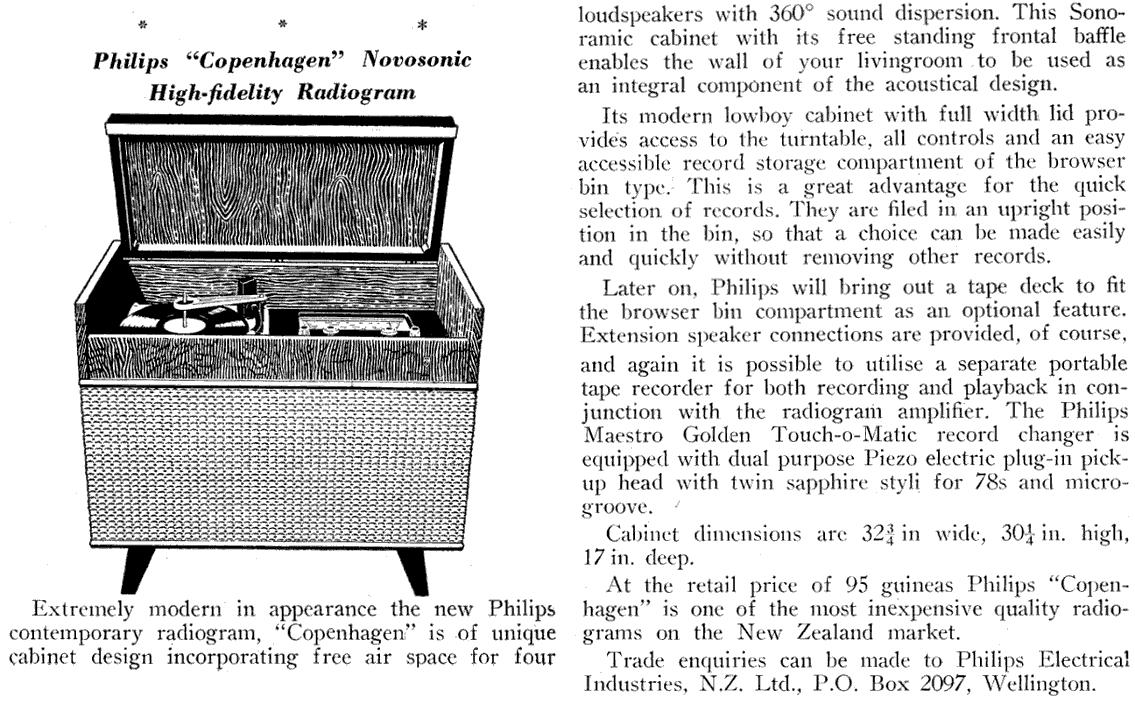7-valve 4-speaker broadcast band radiogram.
Updated in 1958 as the FZ586A Copenhagen MKII, also released as a recordergram with a reel to reel tape unit built in
The likely easy way to tell the difference between the MKI and MKII models is the speaker types. MKI models use the 9766 and 9770 types, while the MKII had AD3500BM and AD3800B types. The MKII also doesn't use an output transformer while the earlier MKI did have one, screwed to the chassis near the power transformer.

Radio & Electrical Review, Oct 57
Intermediate Frequency: 455kc/s
Frequency Bands: 1
General Construction Notes for Philips Electrical Industries of N.Z. Ltd:
Philips early-mid century were probably the Google of their time - they had branches in many countries and a global brand that everyone knew - and were apparently happy to let engineers come up with new ideas and implement them. Construction is often overly complex but very well engineered - although repairs can also take a complex path. They used time-in-motion studies to find the most cost effective way to asemble sets and sometimes this means repairs can be nightmarish (if you've ever worked on a V7A Theaterette this will be all too aparent). U suffix model numbers are transformerless (hot chassis) sets and great care should be taken, or the sets avoided altogether.
Philips model codes are complex - they are explained in-depth on the Philips brand page.
Mullard codes: The model codes from Mullard sets (unlike their Philips counterparts) appear to contain valve count and date information. For example, the model 525 is a 5-valve 1945 design. The 2 appears to just be an identifier (most likely in case there were two models in 1945 with 5 valves, which there was - the 515 is the small 'Meteor' mantle set).
Fleetwood codes are often just a rearranged version of the Philips code. For example, the FL374T transistor radio is a rearrangement of the Philips model L3Z74T. Early Fleetwood codes were numeric with F on the end. From about 1959 onwards the codes were much more like their Philips counterparts. They start with F or FL (or sometimes FZ for larger consoles)... These later codes also tend to end in a Philips-style identifier for the power source (A for mains, B for battery, T for transistor battery, etc - see the Philips brand page for more info on that).